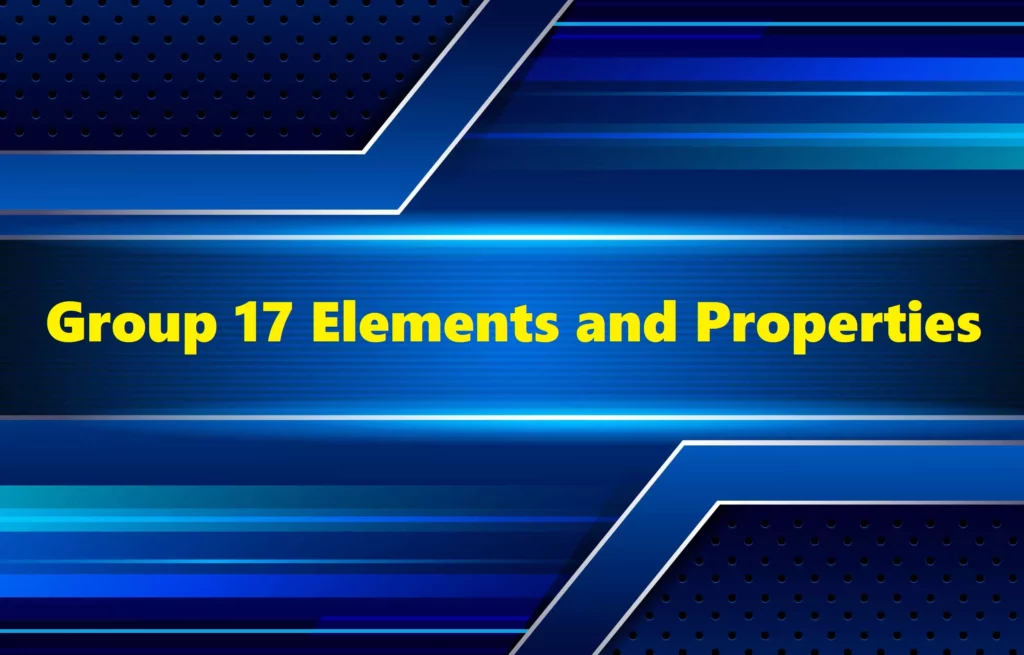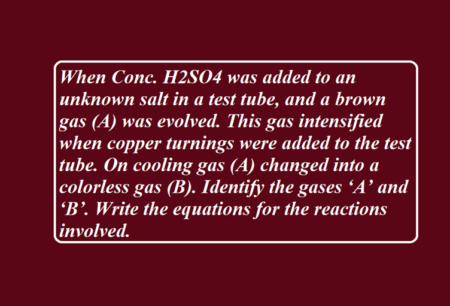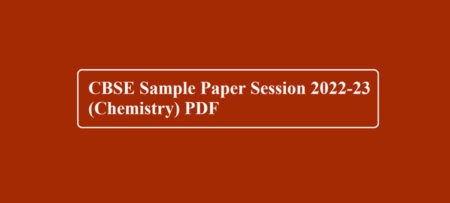Group 17 Elements and Properties
Group 17 Elements
Group 17 includes Fluorine (F), chlorine (Cl), bromine (Br), iodine (I), and astatine (At). They are collectively known as the halogens (Greek halo means salt and genes born i.e., salt producers). The halogens are highly reactive non-metallic elements.
(i) Electronic Configuration: All these elements have seven electrons in their outermost shell (ns2 np5) which is one electron short of the next noble gas.
(ii) Atomic and ionic radii: Halogens have the smallest atomic radii in their respective periods because of the maximum effective nuclear charge. Atomic and ionic radii increase from fluorine to iodine due to the increasing number of shells.
(iii) Ionisation Enthalpy: They have very high ionization enthalpy because of their small size as compared to other groups. Due to an increase in atomic size, ionization enthalpy decreases down the group.
(iv) Electron Gain Enthalpy:
a) Halogens have maximum negative electron gain enthalpy because these elements have only one electron less than stable noble gas configuration.
b) Electron gain enthalpy becomes less negative down the group because atomic size increases down the group.
c) The negative electron gain enthalpy of fluorine is less than that of chlorine. It is because, in fluorine, the incoming electron goes to the 2p subshell, but in Cl, it enters into the 3p subshell. Due to the compactness of 2p subshell compared to 3p subshell, the electron-electron repulsion is greater in fluorine than in chlorine. So, F does not easily gain electrons.
Group 17 Elements and Properties
(v) Electronegativity: They have very high electronegativity. The electronegativity decreases down the group. Fluorine is the most electronegative element in the periodic table.
(vi) Bond Dissociation Enthalpy:
a) Bond dissociation enthalpy follows the order: Cl2> Br2> F2 > I2
b) This is because as the size increases bond length increases.
c) Bond dissociation enthalpy of Cl2is more than F2because there are large electronic repulsions of lone pairs present in F2.
(vii) Colour: All halogens are colored because of absorption of radiations in the visible region which results in the excitation of outer electrons to higher energy levels.
(viii) Oxidising power:
a) All halogens are strong oxidizing agents because they have a strong tendency to accept electrons.
b) Order of oxidizing power is: F2> Cl2> Br2 > I2
(ix) Physical Properties: Fluorine and chlorine are gases, bromine is a liquid and iodine is a solid. Their melting and boiling points steadily increase with atomic number.
Group 17 Elements and Properties
(x) Oxidation State:
a) All the halogens exhibit –1 oxidation state. However, chlorine, bromine and iodine exhibit + 1, + 3, + 5 and + 7oxidation states also.
b) The higher oxidation states of chlorine, bromine, and iodine are realized mainly when the halogens are in combination with the small and highly electronegative fluorine and oxygen atoms., in interhalogens, oxides, and oxoacids.
c) The fluorine atom has no d orbitals in its valence shell and therefore cannot expand its octet. Being the most electronegative, it exhibits only – 1 oxidation state.
d) The ready acceptance of an electron is the reason for the strong oxidizing nature of halogens. F2is the strongest oxidizing halogen and it oxidizes other halide ions in solution or even in the solid phase.
e) Fluorine oxidizes water to oxygen whereas chlorine and bromine react with water to form corresponding hydrohalic and hypohalous acids.
2 F2 (g) + 2 H2O(l) → 4 H+ (aq) + 4 F– (aq) + O2 (g)
X2 (g) + H2O (l) → HX(aq) + HOX (aq) (Where X = Cl or Br)
f) More the value of the SRP, the more powerful is the (algebraically) oxidizing agent.Hence the order of oxidising power is F2 > Cl2 > Br2 > I2. Since Standard Reduction Potential is the highest for F2, it is the strongest oxidizing agent.
Anomalous Behavior of Fluorine:
(i) Due to the small size.
(ii) Highest Electronegativity.
(iii) Low F-F bond dissociation enthalpy.
(iv) Non-availability of d – orbitals in the valence shell.
(v) Most of the reactions of fluorine are exothermic.
(vi) F forms only one oxoacid while other halogens form a number of oxoacids.
(vii) Ionic and covalent radii, melting point and boiling point and electron gain enthalpy are quite lower than expected.
(viii) Hydrogen fluoride is a liquid due to strong hydrogen bonding. While the hydrogen halides of other elements are gases.
Group 17 Elements and Properties
Reactivity towards Hydrogen: They all react with hydrogen to give hydrogen halides but the affinity for hydrogen decreases from fluorine to iodine. They dissolve in water to form hydrohalic acids.
The acidic strength of these acids varies in the order: HF < HCl < HBr < HI. The stability of these halides decreases down the group this is due to a decrease in bond (H–X) dissociation enthalpy in the order H – F > H – Cl > H –Br > H – I.
HF has strong intermolecular H bonding.
% Ionic character: HF > HCl > HBr > HI.
Dipole moment HF > HCl > HBr > HI.
Electronegativity decreases down the group.
Reducing power: HF < HCl < HBr < HI.
As the size increases, van der Waals forces increase, and hence boiling point increases.
Reactivity towards Oxygen:
(i) Halogens form many oxides with oxygen but most of them are unstable.
(ii) Fluorine forms two oxides OF2 and O2F2. However, only OF2 is thermally stable at 298 K. These oxides are essentially oxygen fluorides because of the higher electronegativity of fluorine than oxygen.
Both are strong fluorinating agents. O2F2 oxidizes plutonium to PuF6 and the reactions are used in removing plutonium as PuF6 from spent nuclear fuel.
(iii) Chlorine, bromine, and iodine form oxides in which the oxidation states of these halogen ranges from + 1 to + 7. The higher oxides of halogens tend to be more stable than the lower ones.
(iv) Chlorine oxides, Cl2O, ClO2, Cl2O6, and Cl2O7 are highly reactive oxidizing agents and tend to explode. ClO2 is used as a bleaching agent for paper pulp and textiles and in water treatment.
(v) The bromine oxides, Br2O, BrO2, BrO3 are the least stable halogen oxides and exist only at low temperatures. They are very powerful oxidizing agents.
(vi) The iodine oxides, I2O4, I2O5, I2O7 are insoluble solids and decompose on heating. I2O5 is a very good oxidizing agent and is used in the estimation of carbon monoxide.
Reactivity towards metals: Halogen reacts with metals to form metal halides. For e.g., bromine reacts with magnesium to give magnesium bromide. Ionic character: MF > MCl > MBr > MI. Halides in a higher oxidation state will be more covalent than the ones in a lower oxidation state.
Interhalogen Compounds: Reactivity of Halogens Towards other Halogens: Halogens combine amongst themselves to form a number of compounds known as interhalogen of the types X X’, X X’3, X X’5, and X X’7. Where X is a larger size halogen and X’ is a smaller size halogen.
Group 17 Elements and Properties



